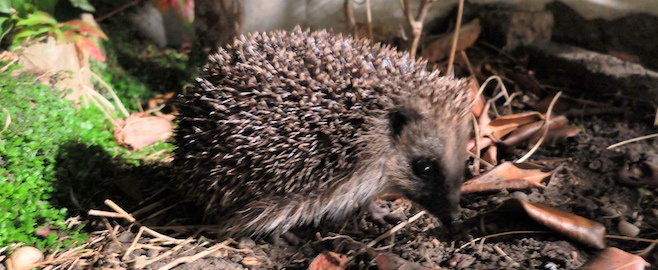
Hedgehogs
/99
One of the first things I bought when we moved into our house a couple of years ago was a hedgehog house. I wasn't sure if there were hedgehogs in the area, but it's hard to know, since they only come out at night and during certain times in the year. A hole in my neighbour's fence, big enough for cats to squeeze through, would be the likely entry point if they were ever to visit.
The hedgehog population in Britain is sharply declining, with fewer than a million left. A third of the population has been lost in the past 10 years. They are a protected species, and their diet of slugs and insects makes them a very useful visitor for gardeners. A lot of my plants were destroyed by slugs this year, so I'm very keen to encourage them.
I'd never even seen a real hedgehog before, other than as pancake-flat roadkill. For about a year, the hedgehog house lay unused, and I began to suspect the food I'd keep leaving out was being eaten by the local foxes.
On a quiet, chilly night earlier this year, I went into the garden to watch the ISS fly over. Just as I was about to go back inside, a hedgehog trotted past me. I happened to have a tray of hedgehog food in the shed which I'd bought in case I'd ever encountered one, and I put it in front of my visitor. It immediately curled itself into a tight ball, and then, very gradually, its little nose emerged, sniffing at the food. Within a couple of minutes, it was noisily munching on the food. (Hedgehogs are not the quiet, delicate animals you might think they are – they make a lot of noise!) When I came back in the morning, all the food was gone. I put an order in for more food.
As the days were getting shorter (hedgehogs hibernate in the winter), I decided to try and revive the old hedgehog house. I read that if it wasn't being used, it was probably in an unsuitable place, so I moved it under a tree. I also bought a hedgehog feeder with a specially designed entry that only small animals can use, but bigger animals like foxes can't. (Sorry, foxes).
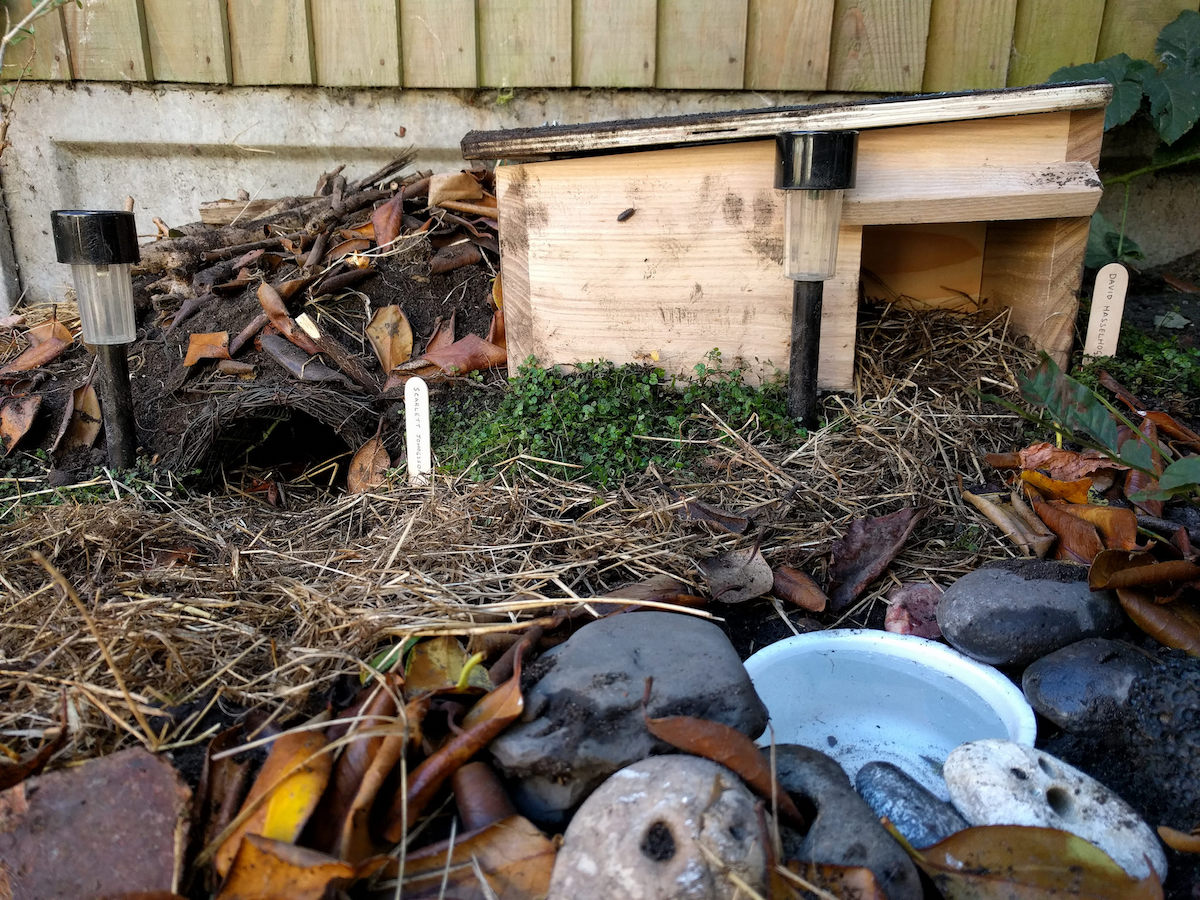
I thought it would be a few weeks before the hedgehogs would use it, but that night, a very big hedgehog (who Cennydd named Jogzilla) went inside and demolished the bowl of food I'd left out. The next night, a second hedgehog stopped by – smaller than Jogzilla. Cennydd named it Scarlett Johogssen.
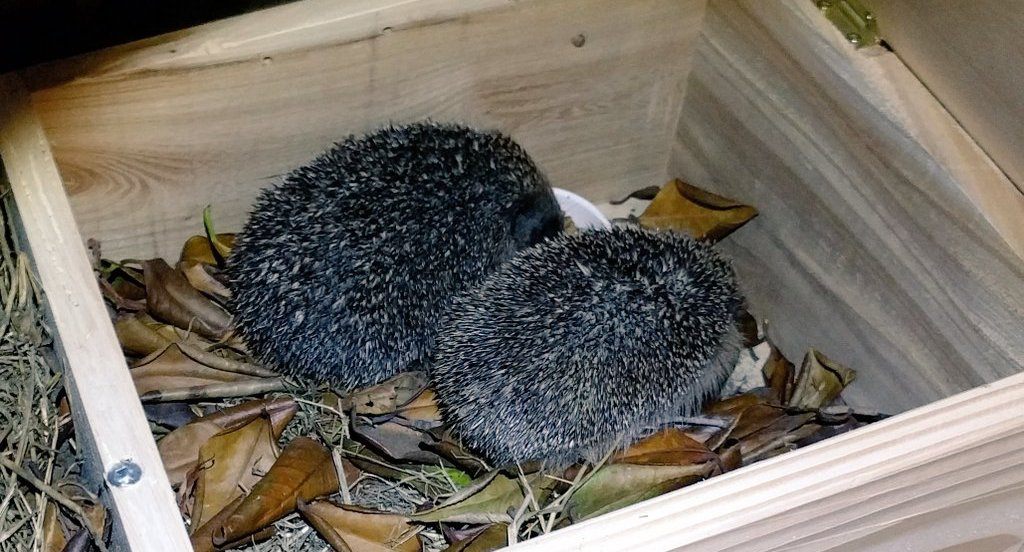
By the end of the week, multiple hedgehogs were stopping by for a snack. I noticed a hole had been dug under the other fence, which my neighbours promised to leave open. (In exchange, I gave them the honor of naming our third visitor. They chose to call it David Hasselhog). I bought a couple more hedgehog houses since the two I had were already being occupied by Scarlett and David. I also added a crude swimming pool (it's important to leave out water) and plenty of nesting material, which they've been pulling into the homes.
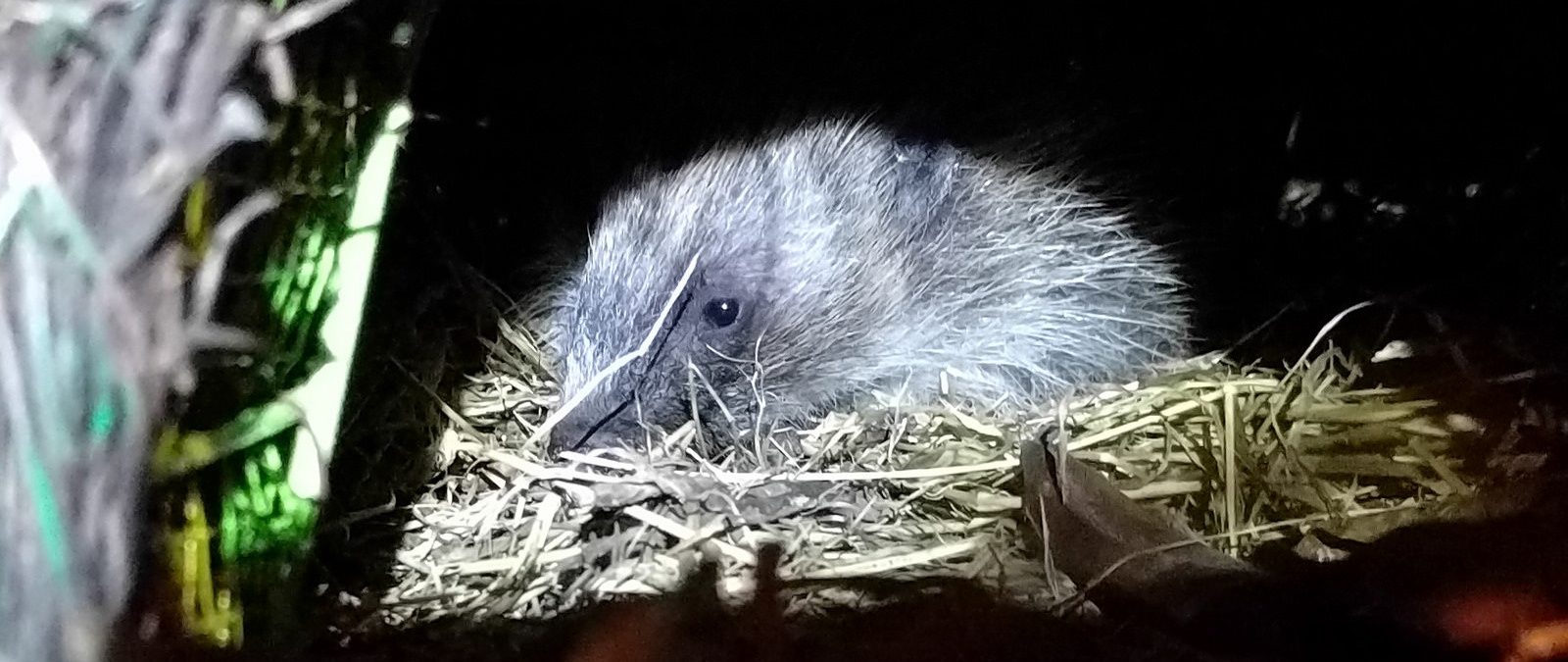
It's now October and I'm not sure exactly how many hedgehog visitors I have, but every night they get through a bowl of hedgehog food and a tray of cat food. They're fattening up to prepare for hibernation, which is likely to happen imminently, when there's a cold snap. Hedgehogs are normally born in spring, but sometimes a second litter is born later in the year (referred to as autumn juveniles), and are often too small to survive if they try to hibernate.
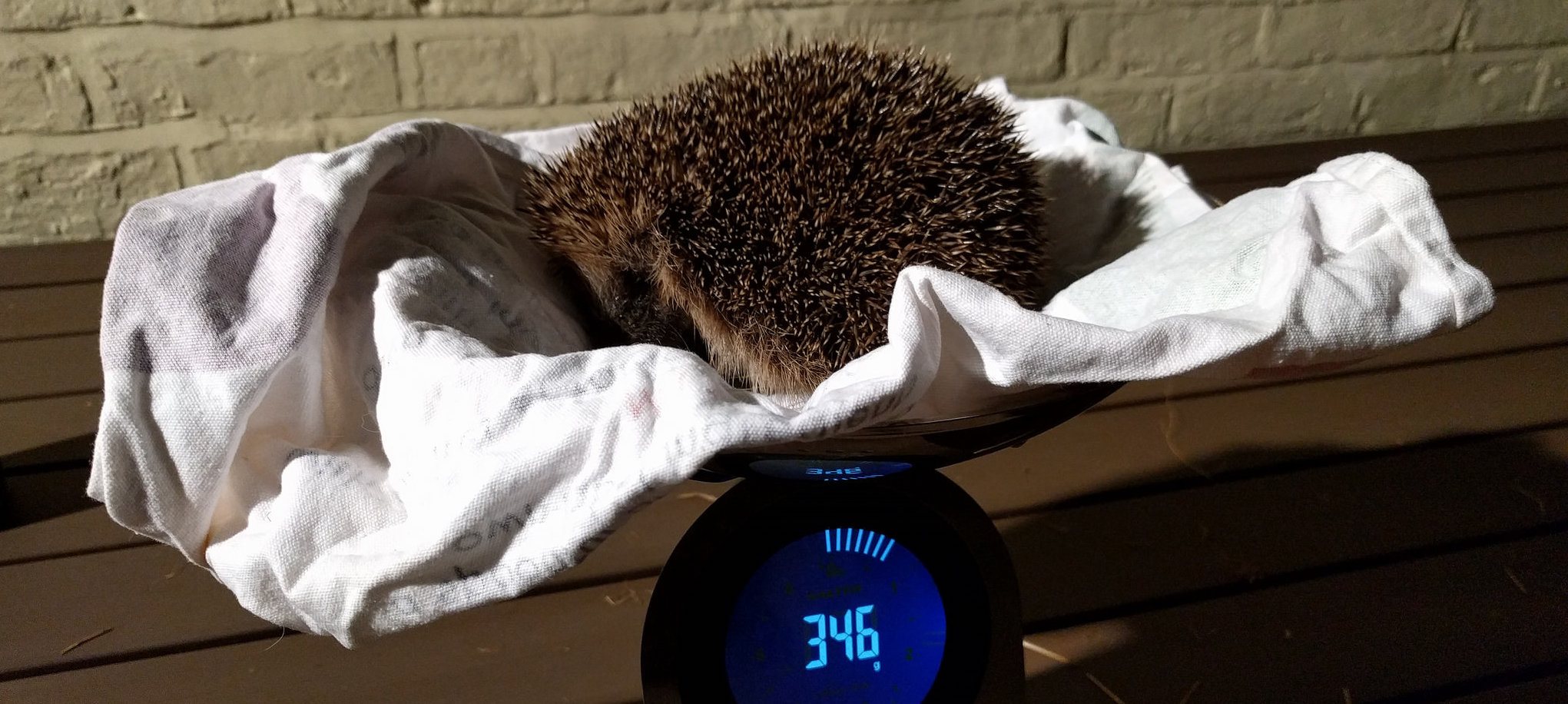
Sadly, at least one of my visitors is a juvenile. Hedgehogs need to weigh a minimum of 450g to survive the winter. If they weigh less than this in mid-October (now), the advice is to take them in to a warm environment so they won't try and hibernate, and to feed them until they reach an ideal weight of 600g.
At under 350g, this hedgehog is very unlikely to survive hibernation, so I've followed a hedgehog expert's advice and taken it in. I've reached out to my most local carer to see if they have room to look after it until it can be released back into the wild. While I don't mind looking after it for a bit, I'm not a hedgehog expert or set up to properly care for one, so I'd rather leave it to them.
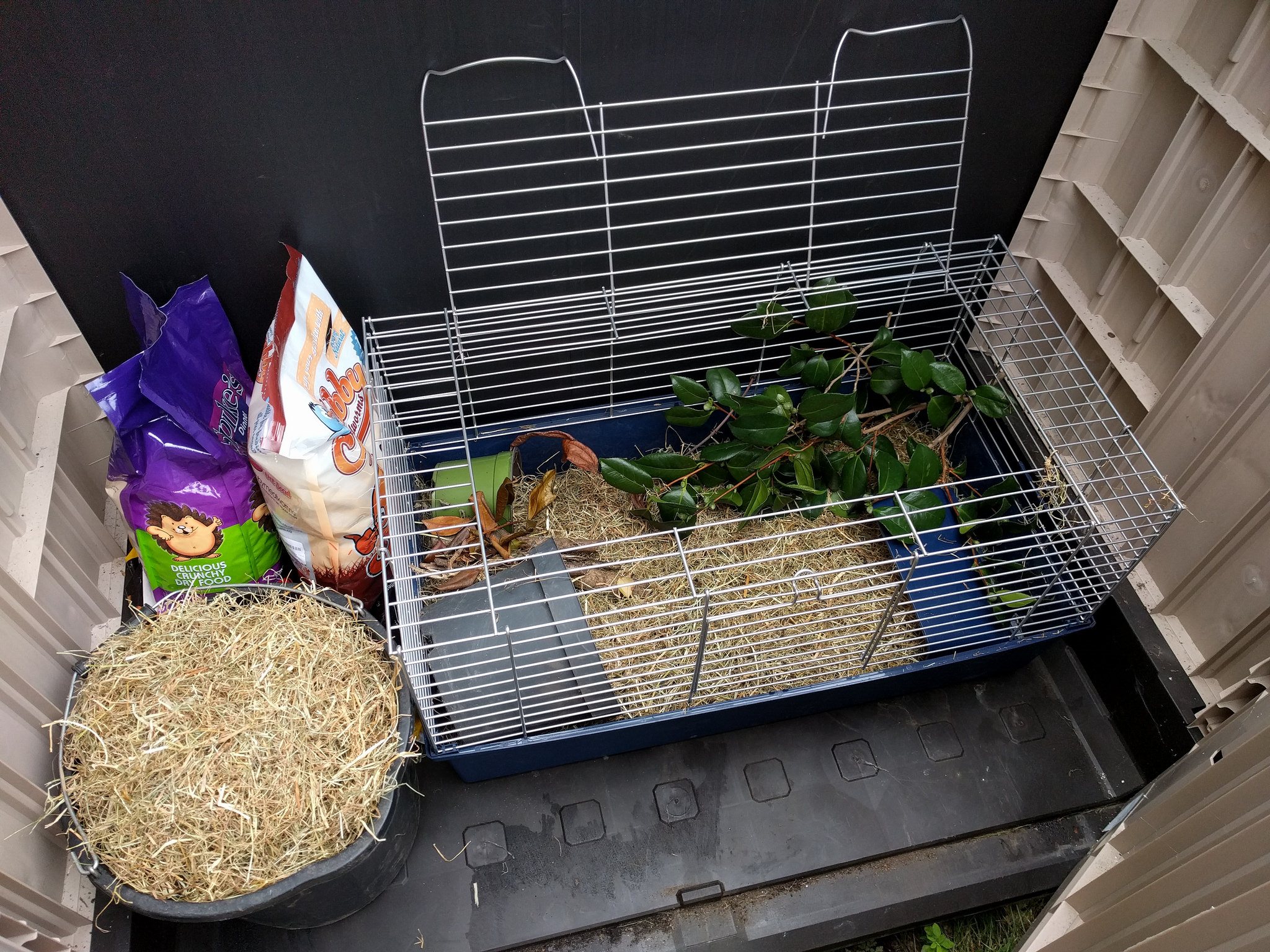
When my vet opens after the weekend, I'll see if they can give this hedgehog a checkup and get any advice from them on what to do next.
Update: I took the hedgehog to the vet as soon as they opened after the weekend and they were very helpful. I phoned the RSPCA for a log number which the vet can use to claim their expenses for treating a wild animal.
I hadn't been able to see properly because the hedgehog would curl tightly into a ball when I tried to inspect it, but this was the one I'd seen earlier with the missing foot. Its leg was so swollen that it was pushing into its stomach. It wouldn't have been able to survive in the wild so the vet made the decision to put it to sleep.
It's common for hedgehogs, this one included, to have ticks. Ticks aren't a problem for hedgehogs unless there are lots of them, but removing them in the wrong way can cause an infection. While hedgehogs also have fleas, they are host specific, so other animals can't catch them. They can however carry diseases such as lungworm, which can affect cats and dogs, as well as humans, so it's important to only handle them with gloves, and keep pets away from them. (Fortunately, Beemo hasn't shown any interest).
Helping hedgehogs
One of the best things you can do if you want to encourage hedgehogs into your garden is to make a hole in your fence. Hedgehogs travel an average of 2km a night, and making a 13cm² hole will give them more space to roam. Check with your neighbours before doing this!
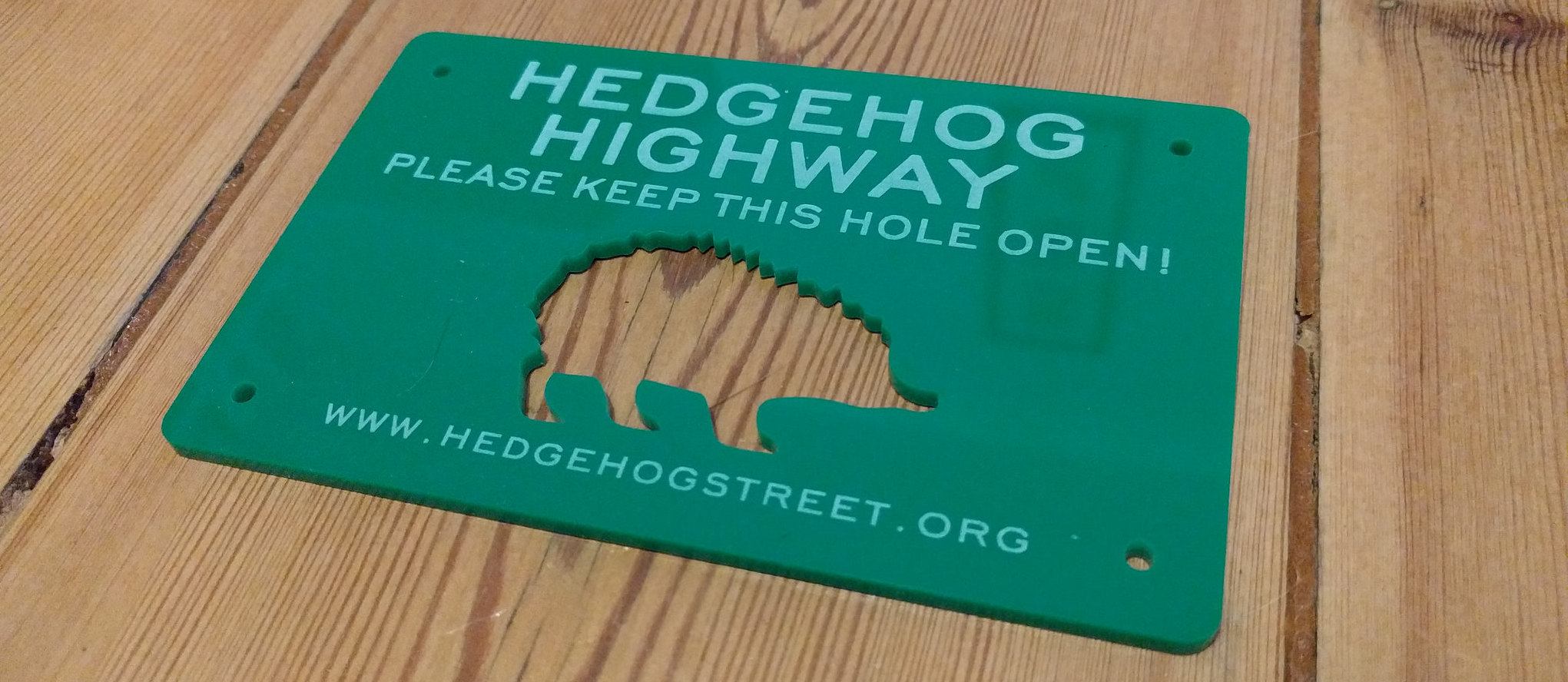
Before doing any work in your garden (strimming, lighting a bonfire, pulling up plants), check for sleeping hedgehogs. If you find one, try not to disturb it, and keep its habitat intact.
Do not use slug pellets, as these can kill animals further up the foodchain. Encouraging hedgehogs will help you get rid of slugs organically, and there are also animal-friendly products you can use instead such as wool pellets and copper tape.
Resources (UK specific)
There's a lot more you can do to help hedgehogs in your area, so if you're looking for more information, here are some places I recommend:
- If you find a wild animal that needs help, helpwildlife.co.uk is a great resource. They'll tell you what to do and where to take the animal.
- The British Hedgehog Society has lots of information on their site about hedgehogs. I'm considering joining.
- Hedgehog Street maps hedgehogs people have found. If you have seen one, record it there.